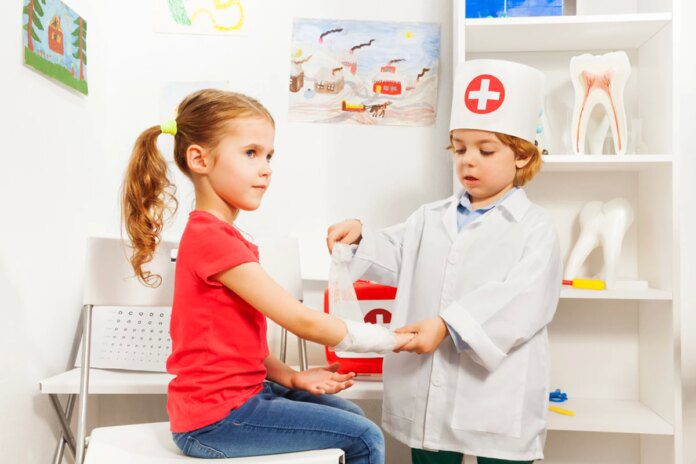When your child is away from you, on a trip, a camp or other situation, it is good for him to know how to react when something unpredictable happens and he is injured or faces another health problem.

From an early age, children must know first aid measures. Photo: Shutterstock
No matter how much you protect your child, you cannot be around him all the time, including when he might get hurt. That is why it is a good idea to teach him some basic first aid measures so that he can help himself, but also his siblings or colleagues. It may seem too small to you, but children learn very quickly. Explain to them when it is necessary to call the emergency service 112 and that they should not call if they do not have an emergency. Teach him to tell the operator what they need help for and where emergency personnel should come. To do this, help him remember at least his home address. For small household accidents, get him used to simple actions he can take to prevent complications.
Foreign body drowning
When the child or a colleague around him chokes on food or a foreign body, he must know that the first step is to try to cough, if he can breathe. In this way, it will remove itself what is blocking the breath. If he can’t, he doesn’t speak, he can’t cough or breathe and he’s alone, try to lean hard over the back of a chair or other piece of furniture, thus pressing the area between the navel and the end of the sternum. In the case of a colleague who drowned, it is necessary to apply 5 blows to the back, between the shoulder blades, with an open palm, using the bridge of the palm. These don’t work either? He must sit behind the colleague, with both arms around him, with a fist between the navel and the end of the sternum. Grab the fist with the other hand and make 5 sudden movements inwards, upwards. If it does not work even after 2-3 repetitions, you must call 112 for emergency help.
That’s how it stops bleeding!
In most wounds, bleeding is stopped by direct pressure. Can use a piece of clean cloth. If the wound is dirty, he will clean it with water, then he can apply a disinfectant and a bactericide in the form of ointment or powder. You could put at hand an ointment with hyaluronic acid that is useful not only in case of wounds, but also for irritations, scratches, burns, cuts.
How to treat a burn
If a burn does occur, teach the child to go and wash the area with cold water for 10 minutes or until the pain goes away. Does he have clothes stuck to the burned area? He must know that it is not advisable to try to peel them off. He will also avoid breaking the blisters, if they appear, putting ointments, other than special ones for burns, oil or leucoplast over the burn.
What to do in case of nosebleed
One of the situations that can scare a child is nosebleeds. Keep him in the loop with what he has to do so you won’t be taken by surprise. It will be necessary to tilt the head forward, so that the blood flows, while the child will hold the soft part of the nose with his fingers for 10 minutes. They don’t have to spit, blow their nose or cough, just hold the tissues to absorb the blood. If it doesn’t stop after 10 minutes, you can repeat the procedure 2 more times. After stopping the bleeding, he must know not to exert himself or blow his nose for several hours. In case the bleeding continues beyond half an hour, it is better to be seen by a doctor.
swell
86% of children between the ages of 9 and 18 could correctly perform cardiopulmonary resuscitation (CPR), but the European Resuscitation Council recommends the age of 12 as the optimal age to start a course.
“First aid. Manual’, Litera Publishing House, 2013
“To perform CPR, place one hand in the center of the victim’s chest. Place the bridge of the other palm on top of the hand and by crossing your fingers, make sure the fingers are away from the ribs. Leaning over the victim’s chest, press vertically. Release the pressure without raising your hands. Perform 30 compressions at a rate of 100-200 compressions per minute. For artificial ventilation, tilt the victim’s head with one hand and lift his chin with two fingers of the other hand. Pinch the nostrils with your fingers to close them. Breathe in and blow air into the victim’s mouth. Give two more artificial ventilations. Repeat the cycle of 30 compressions followed by two ventilations. Continue until the emergency services arrive or until the victim shows signs of regaining consciousness.’
Read also: How obesity affects the brain of children and young people






































